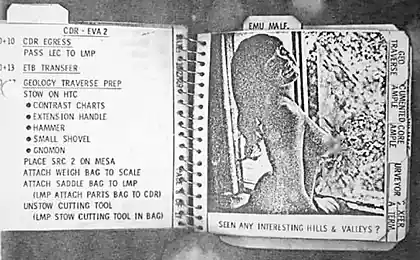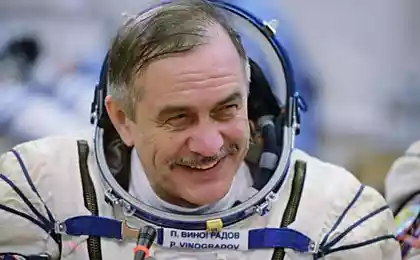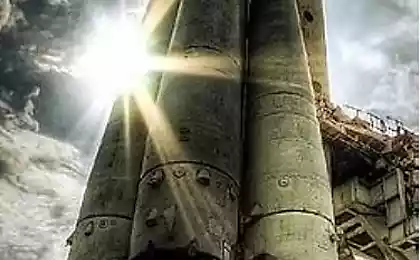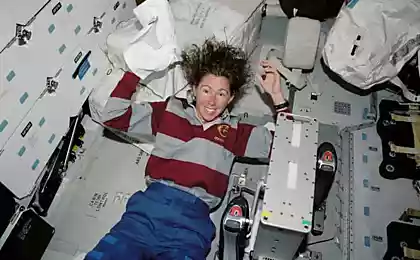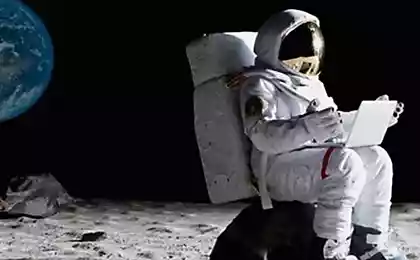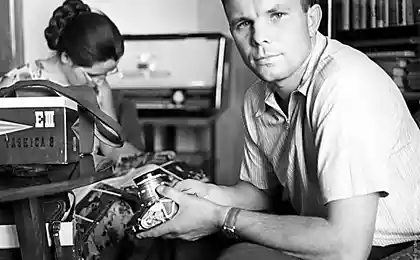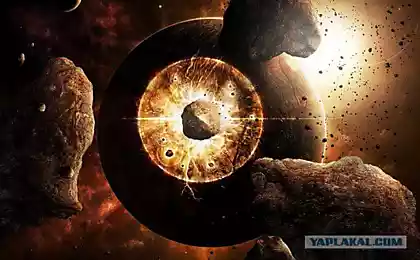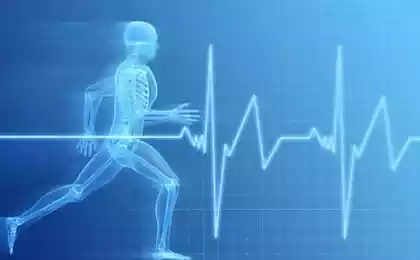839
10 ordinary things that completely changed in the space

Belching

Under normal conditions, gravity causes the liquid that collects in the bottom of your stomach, and the gases rise to the top. Since the space is not gravity, the astronauts removed to a so-called "wet burp" (excuse the pun). Simple burp easily expelled from the stomach all the liquid that keeps on Earth gravity. For this reason, the International Space Station do not use carbonated beverages. Even if used, gravity would not allow the bubbles to rise as in the world, so the soda or beer does not run out of steam so quickly.
Speed
--img3--
In space, a random piece of debris is moving so fast that hardly our brains can imagine such a speed. Remember the millions of tiny fragments of debris that fly around the Earth? They move at a speed of 35,500 km / h. At this speed, you can not even catch the object approaching. Just in nearby structures appear mysterious holes - unless you are lucky and do not you be holed.
Last year, the astronauts on board the International Space Station took a shot a hole in a huge solar panel. The hole is almost certainly the result of a collision with one of these tiny fragments (maybe a millimeter or two in diameter). In any case, NASA expects a collision like this, and shields the body station that he sustained during a collision event.
Alcohol production
--img4--
Far away in space, near the constellation Aquila, floats a giant cloud of gas with 190 trillion trillion liters of alcohol. The existence of such clouds defies much of what we thought was impossible. Ethanol is a relatively complex molecule to form at a rate, and the temperature in the space required for the reaction of producing alcohol, also does not comply.
Scientists have recreated the conditions of space in the laboratory and put together two organic chemicals at -210 degrees Celsius. The chemicals react immediately - about 50 times faster than at room temperature, contrary to all expectations of scientists.
Perhaps it is responsible for quantum tunneling. Due to this phenomenon, taking particle properties of waves and absorb energy from the environment that allows them to overcome barriers that otherwise would prevent them from acting.
Static electricity
--img5--
Static electricity is sometimes gets up quite bizarre things. For example, the video above shows a drop of water, revolving around a statically charged needle. Electrostatic forces are working at a distance, and this force pulls objects like planetary gravity, putting drops in free fall.
Static electricity is much more powerful than some of us can imagine. Scientists are working to develop the electrostatic attracting rays to clean the debris from orbit. In fact, this power can also give unbreakable locks for doors and futuristic vacuum cleaner. Yet a growing danger of flying debris around the Earth is more important, and this ray can capture a piece of trash and throw it into the cosmos.
Vision
--img6--
Twenty percent of the astronauts living on the International Space Station, reported problems with vision, which appeared immediately on his return to Earth. And until now, no one knows why.
We almost thought that this is due to the fact that the low gravity increases the flow of fluid in the skull and cranial pressure increases. However, new evidence suggests that this may be due to polymorphism. Polymorphism - a deviation from the norm of enzymes, and they may affect how the body processes nutrients.
Surface tension
--img7--
We tend to ignore the surface tension in the world because of its gravity always penalized. However, if you remove gravity, surface tension is an extremely powerful force. For example, if you squeeze washcloth in space, rather than to drain water clinging to the fabric, taking the form of a pipe.
If the water would not cling to the surface tension collects water into a ball. The astronauts are extremely careful with water, not to be with a myriad of tiny beads floating around them.
Exercises
--img8--
You probably know that the astronauts in space muscles atrophy, but to counteract this effect, the astronauts have to exercise a lot more than you think. Space - not for the weak, so you have to train at the level of a bodybuilder, unless you want to make your bones become bones of 80-year-old man. Exercises in space - is "priority number one for the health." No protection from solar radiation, not evading deadly asteroids, namely daily exercise.
Without this regime is not just the astronauts will return to Earth weaklings. They may lose as much bone and muscle mass, which can not even walk when gravity begins to put pressure on them. And if you can build muscle without any problems, bone mass can not be recovered.
Microbes
--img9--
Imagine our surprise when we sent samples of salmonella into space and she returned seven times more deadly than before. For the health of our astronauts to the news could be extremely disturbing, but armed with the new data, scientists have figured out how you can win salmonella in space and on Earth.
Salmonella can measure the "fluid shear" (fluid turbulence around it) and uses this information to determine its location in the body. Providing in the gut, it determines the highest fluid motion, and tries to move toward the wall of the intestine. Getting on the wall, it exhibits low movement and increases the rate of penetration into the wall and into the bloodstream. In weightlessness bacteria constantly feels low traffic, so it switched to an active state virulent.
Studying Salmonella genes activated in low gravity, researchers have determined that high concentrations of ions can inhibit the bacteria. Further studies should lead to a vaccine and effective treatment of salmonella poisoning.
Radiation
--img10--
The sun - is a giant nuclear explosion, but Earth's magnetic field protects us from the most harmful rays. The current mission in space, including visits to the International Space Station are in the magnetic field of the Earth, and shields quite cope with the flow of sunlight.
But the longer space, the stronger the radiation. If we ever want to get to Mars and bring the space station to orbit the moon, we have to deal with high-energy background particles that fly from distant dying stars and supernovae. When these particles enter the shields, they act like shrapnel, and this is even more dangerous than the radiation itself. Therefore, scientists are working on protection from such radiation, and while it does not appear, booked a trip to Mars.
Crystallization
--img11--
Japanese scientists watched as the crystals formed in microgravity, shelling the helium crystals acoustic waves under simulated weightlessness. As a rule, after the destruction of helium crystals it requires a lot of time to convert, but these crystals become superfluid - a liquid that flows with zero friction. As a result of helium quickly formed a giant crystal - 10 mm in diameter.
It seems that the cosmos tells us a way of growing large and high-quality crystals. We use a silicon crystal in almost all our electronics, so such knowledge could eventually lead to improved electronic devices.
--img12--
Source: nevolia.net







